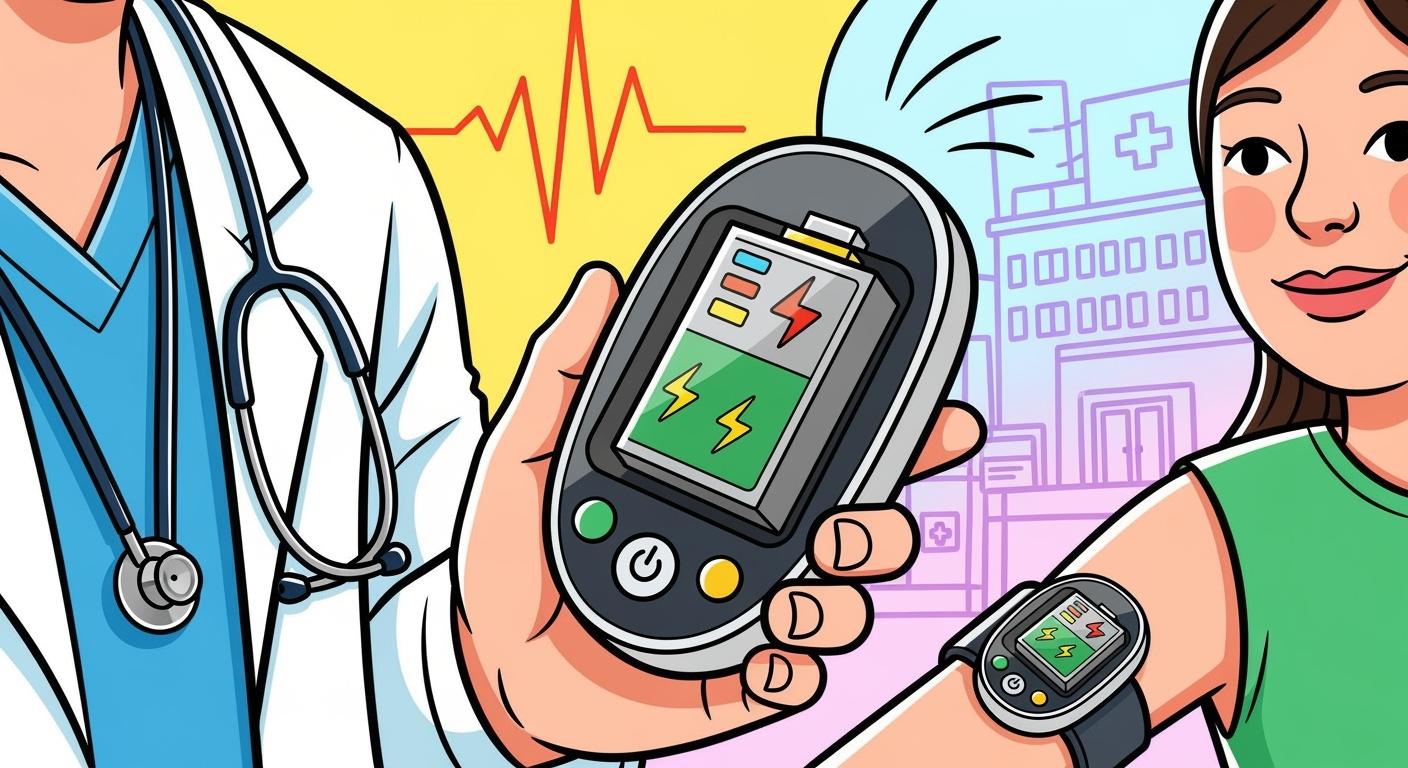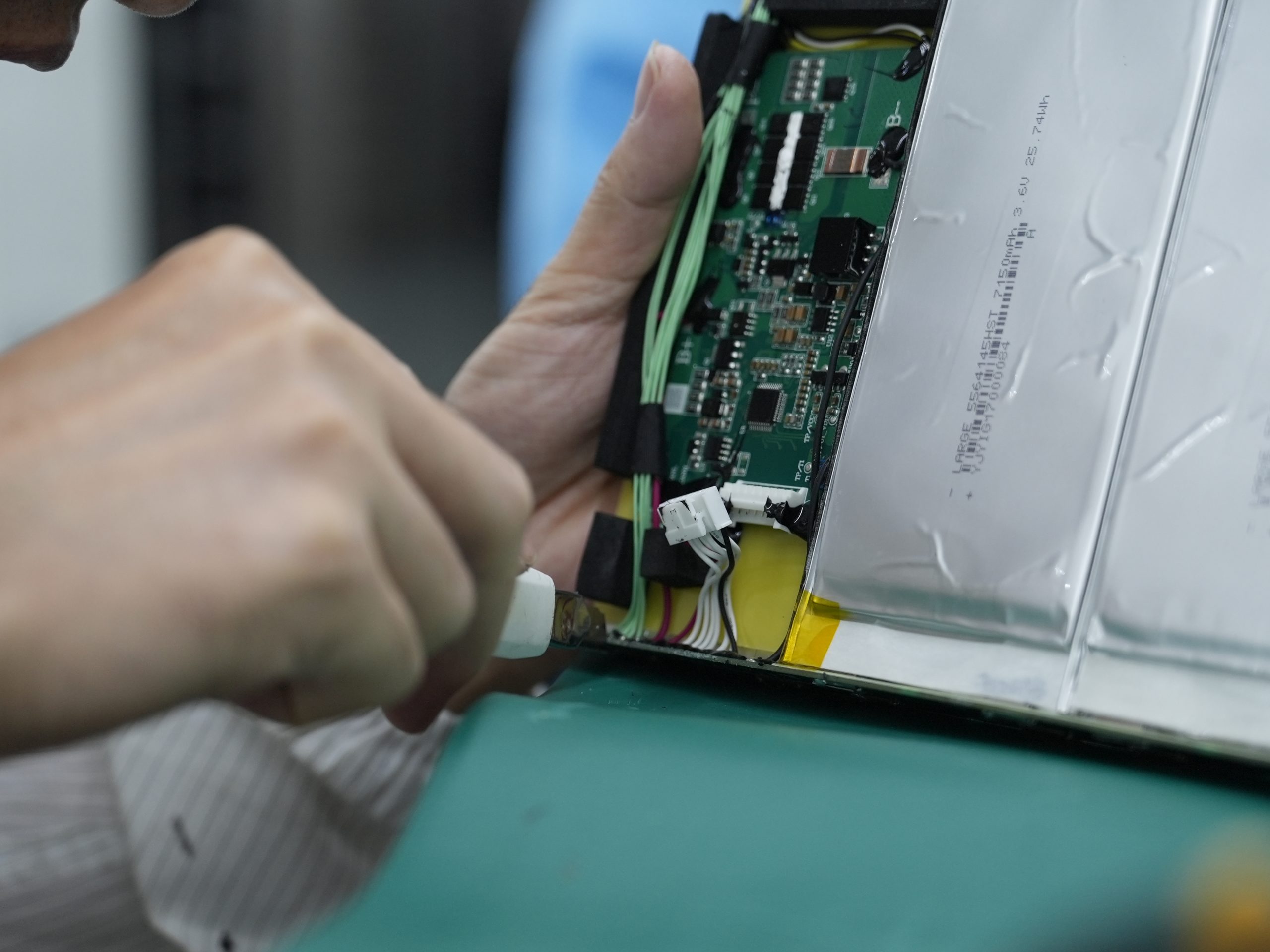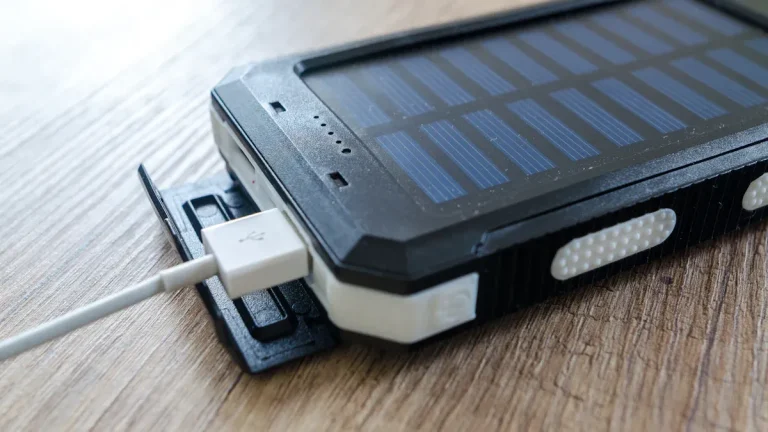
You rely on advanced batteries to power mobile medical devices, ensuring consistent performance and safety. Lithium-ion batteries dominate with a 50.73% market share, offering high energy density and stable voltage. The table below highlights reliability and safety standards critical for healthcare applications.
Aspect | Description |
|---|---|
Reliability | Medical device battery reliability is crucial; a single failure can disrupt patient monitoring or delay treatment. |
Safety Standards | Medical-grade batteries must meet strict safety and reliability standards. |
Key Takeaways
Advanced batteries, especially lithium-ion, ensure reliable performance in medical devices, crucial for patient safety and continuous monitoring.
Lightweight and portable designs of modern batteries enhance patient mobility, allowing for greater comfort and flexibility in various settings.
Safety features and compliance with strict standards protect against risks, ensuring that medical devices operate effectively and safely.
Part1: Advanced Batteries Drive Medical Device Performance
1.1 Reliability And Safety In Healthcare
You depend on battery reliability and safety every time you use medical devices in clinical or home settings. Advanced batteries, especially lithium-ion batteries, have transformed medical device battery design by delivering consistent performance and robust protection. Medical professionals require uninterrupted operation for devices such as portable oxygen concentrators and wearable monitors. A single battery failure can disrupt patient monitoring or delay critical treatment.
Note: Medical-grade batteries must comply with strict international safety standards to minimize risks like thermal runaway, short-circuit, or overheating.
Standard | Application |
|---|---|
IEC 62133 | Rechargeable batteries in medical devices |
IEC 60601-1 | Medical devices with rechargeable batteries |
IEC 60086-4 | Non-rechargeable lithium batteries in devices |
UL 1642/2054 | Devices sold exclusively in North America |
You benefit from advanced battery management systems that monitor cell voltage, temperature, and current. These systems provide short-circuit protection and prevent overcharging, which reduces the risk of battery failure. Safety features such as thermal fuses and pressure vents further enhance protection. Medical device battery design now prioritizes both reliability and safety, ensuring continuous operation in demanding environments.
1.2 Portability And Patient Mobility
Advanced batteries have made medical devices more lightweight and portable. You can now move freely with devices like wearable heart monitors, insulin pumps, and portable oxygen concentrators. The high energy density of lithium-ion batteries allows manufacturers to create compact devices without sacrificing runtime or performance.
Advanced battery technology powers essential medical devices like pacemakers and hearing aids.
Companies such as Medtronic use these batteries to improve patient mobility and reliability.
The efficiency and reliability of these batteries lead to better patient outcomes and higher quality of care.
The lightweight design and high energy density of modern batteries support usability in various clinical scenarios. You experience greater comfort and flexibility, whether you are in a hospital or at home. Medical professionals also benefit from the portability of diagnostic equipment, which enables rapid response and point-of-care testing.
Benefit | Description |
|---|---|
Extended Runtime | Longer operating times enable uninterrupted use of devices during medical procedures. |
Compact Design | Lightweight and small size enhance usability in various clinical scenarios. |
Quick Charging | Reduces downtime, allowing medical personnel to quickly resume operations. |
Durability | Robustness makes them suitable for the demanding conditions of medical environments. |
1.3 Impact On Patient Outcomes
You see a direct impact on patient outcomes when using medical devices powered by advanced batteries. Reliable battery performance ensures continuous monitoring and therapy, which improves patient safety and satisfaction. The integration of advanced battery technology in implantable devices, such as deep brain stimulators and cardiac pacemakers, has led to high satisfaction rates among patients.
88% of patients reported satisfaction with deep brain stimulation (DBS) treatment.
93% of patients with rechargeable implantable pulse generators would choose the same device again.
Satisfaction rates remain high for both rechargeable and non-rechargeable devices, with no significant difference in patient preference.
The lightweight and compact nature of these devices, combined with extended battery life and rapid charging, enhances usability and quality of care. You benefit from uninterrupted therapy and monitoring, which leads to better health outcomes and increased confidence in medical technology.

The cost of battery packs has dropped significantly, making advanced batteries more accessible for medical applications. In 2010, the average price was $1,100 per kWh. By 2020, it had fallen to $137 per kWh, and projections indicate further reductions by 2030. This trend supports the widespread adoption of portable medical device battery solutions, enabling you to access cutting-edge medical care wherever you are.
Part2: Key Features Of Portable Medical Device Battery Technology

2.1 High Energy Density And Longevity
You rely on advanced batteries to deliver high energy density and long-lasting performance in medical devices. Energy density measures how much energy a battery stores per unit weight or volume. Lithium-ion batteries typically offer energy densities between 150 and 250 Wh/kg and 300 to 700 Wh/L. This high density allows you to use lightweight devices that run longer without frequent charging. Battery longevity depends on several factors, including material quality, effective design, and proper manufacturing. You benefit from batteries with robust life cycles, reducing the need for replacements and minimizing downtime.
Metric | Description |
|---|---|
Power Density | Enables quicker charging and discharging. |
Life Cycle | High life cycle reduces the need for frequent replacements. |
Safety Features | Built-in mechanisms like overcharge protection enhance safety. |
Material Quality | High-quality materials help retain battery capacity over time. |
Proper Manufacturing | Precision in production minimizes flaws, increasing lifespan. |
Effective Design | Good design reduces stress on the battery, prolonging its life. |
Battery Management Systems (BMS) | Monitors and controls charging/discharging to prevent damage. |
Safe Usage Practices | Avoiding overcharging and excessive heat can enhance longevity. |
2.2 Battery Safety And Rapid Charging
Safety remains a top priority in portable medical device battery design. You depend on batteries that meet strict safety standards, such as IEC 62133, UL 2054, IEC 60601-1, ISO 10993-1, and ISO 13485. These standards ensure protection against thermal runaway, short-circuit, and other hazards. Advanced battery management systems provide short-circuit protection and monitor temperature, voltage, and current. Rapid charging technology helps you maintain device availability, reducing downtime in clinical environments. Charging stations and mobile charging hubs keep devices ready for use, supporting high reliability and continuous performance.
Standard | Description |
|---|---|
IEC 62133 | International standard for secondary cells and batteries, including biocompatibility and safety features for medical use. |
UL 2054 | Covers electrical, mechanical, environmental, and thermal safety. |
IEC 60601-1 | General requirements for safety and essential performance of medical electrical equipment. |
ISO 10993-1 | Evaluates biological safety, ensuring batteries do not cause adverse reactions. |
ISO 13485 | Quality management system for producing safe and reliable medical device batteries. |
Rapid charging solutions ensure uninterrupted access to medical devices.
Continuous functionality reduces downtime, which is critical for patient care.
Adequately charged devices streamline record-keeping and updates.
2.3 Applications In Wearables, Diagnostics, And Implantables
You see advanced batteries powering a wide range of medical devices, including wearables, diagnostic tools, and implantables. Lightweight battery technology supports sensors and continuous data transmission for patient monitoring. Devices use energy-efficient modes to extend battery life and maintain reliability. Implantable medical devices rely on specialized batteries, such as degradable magnesium-based or non-degradable lithium-based types, to ensure safe and effective operation.
Implantable medical devices are critical in healthcare, relying on advanced batteries for energy supply. Performance and biodegradability are essential for their application in IMDs.
Battery Technology | Charge Cycle Count | Capacity Retention Rate |
|---|---|---|
LiFePO4 Lithium | 2,000–5,000 cycles | High stability |
NMC Lithium | 1,000–2,000 cycles | Balanced energy density |
LCO Lithium | 500–1,000 cycles | High energy density |
Aspect | Explanation |
|---|---|
Ensures quick response times for critical signal transmission, essential for real-time monitoring. | |
High Data Rate | Facilitates rapid and reliable sending of signals, crucial for continuous data transmission. |
Energy Efficiency | Prioritizes important physiological signals to conserve battery life, allowing for sustained operation. |
Active/Inactive Modes | The system conserves energy by remaining idle when not in use, thus extending battery life for sensors. |
You benefit from portable medical device battery solutions that combine lightweight design, high energy density, and advanced safety features. These technologies enhance usability, reliability, and performance in medical environments.
Part3: Challenges And Innovations In Medical Device Battery Solutions

3.1 Safety And Regulatory Compliance
You place safety at the forefront when selecting batteries for medical devices. Manufacturers must meet strict standards to ensure safety and efficacy. Regulatory agencies evaluate battery safety through compliance with FDA’s 21 CFR Subchapter H and EU Battery Regulation 2023/1542. Testing includes device, battery, and MRI compatibility assessments under ISO 10974. Risk assessments categorize devices as MR Safe, MR Conditional, or MR Unsafe. Battery safety testing addresses overheating, leakage, and explosion risks, protecting patient health and device reliability. You rely on advanced protection circuits and short-circuit protection to prevent thermal runaway and ensure continuous performance.
Standard | Focus Area |
|---|---|
IEC 62133 | Overcharging, short-circuiting, thermal runaway |
UL 2054 | Battery enclosure integrity, fire exposure |
ISO 13485 | Quality control, documentation |
IEC 60601-1 | Safety and performance of medical devices |
3.2 Cost And Scalability
You face cost drivers in battery production, including innovation in medical devices, regulatory requirements, research and development, and environmental concerns. Continuous advancements in miniaturization and wireless technology demand batteries with higher energy density and longer lifetimes. Stringent regulations for implantable batteries complicate development and approval. High R&D costs create barriers for smaller companies. Environmental concerns push manufacturers to adopt sustainable practices.
Cost Driver | Description |
|---|---|
Innovation in Medical Devices | Miniaturization and wireless technology require higher energy density and longer lifetimes. |
Regulatory Requirements | Safe design and biocompatibility complicate development and approval. |
Research and Development Costs | Developing sophisticated batteries is expensive. |
Environmental Concerns | Disposal issues drive the need for sustainable production and recycling. |
Advanced tooling and improved assembly technologies enhance scalability. Investments in next-generation machinery increase throughput and reduce costs, ensuring a reliable supply chain for medical device battery design.
3.3 Future Trends And Sustainability
You see innovations in implantable energy storage, such as rechargeable devices and energy harvesting techniques that convert body heat or motion into electrical energy. These advancements improve sustainability and reduce the need for surgeries. Improper disposal of lithium-ion batteries contributes to electronic waste, contaminating soil and water. Sustainable practices, including responsible extraction and efficient recycling, minimize environmental impact. Sodium-ion batteries and efficient waste management systems offer promising alternatives. The market for portable medical devices will grow due to demand for compact, energy-efficient batteries. You benefit from smart batteries with integrated monitoring, enhancing safety features and reliability. Solid-state batteries promise higher energy density and improved safety profiles, critical for next-generation lithium-based battery solutions.
Key improvements in battery technology focus on lifespan, safety features, and miniaturization, driving performance and usability in medical, robotics, security, infrastructure, consumer electronics, and industrial applications.
You see advanced batteries transforming medical devices with lightweight design, high energy density, and reliable safety. The market for batteries grows rapidly, driven by medical needs and chronic disease management. Battery technology delivers longer lifetimes, rapid charging, and robust monitoring. Smart battery management systems optimize performance and safety, shaping the future of medical energy solutions.
Projected market growth from US$4.7 billion in 2025 to US$7.6 billion by 2032 (CAGR 7.1%)
Lithium-ion batteries offer high density, long cycle life, and low self-discharge
Smart battery management systems extend battery life by 30%
Innovations in battery technology enhance safety and reliability for medical devices
You benefit from ongoing advancements in battery technology, ensuring medical devices remain lightweight, safe, and efficient. The future promises smarter, more reliable battery solutions for healthcare.
FAQ
What are the main lithium battery chemistries used in medical devices?
Chemistry | Platform Voltage | Energy Density (Wh/kg) | Cycle Life (cycles) |
|---|---|---|---|
3.2 V | 120–160 | 2,000–5,000 | |
NMC | 3.7 V | 150–220 | 1,000–2,000 |
LCO | 3.6 V | 150–200 | 500–1,000 |
How does Large Power support custom lithium battery pack solutions for B2B medical applications?
You can consult Large Power for tailored lithium battery pack solutions. Request a custom consultation to optimize your medical devices for safety, reliability, and compliance.
Which industries benefit from advanced lithium battery packs?
You see lithium battery packs powering medical devices, robotics, security systems, infrastructure monitoring, consumer electronics, and industrial equipment. These packs deliver high energy density and long cycle life.






